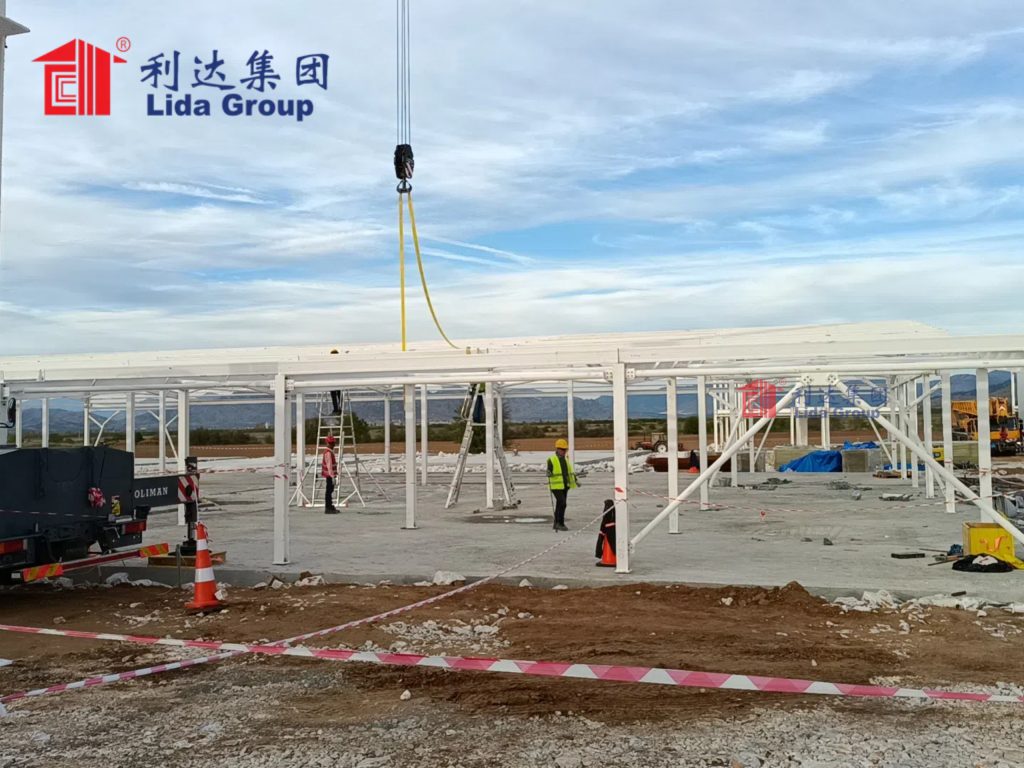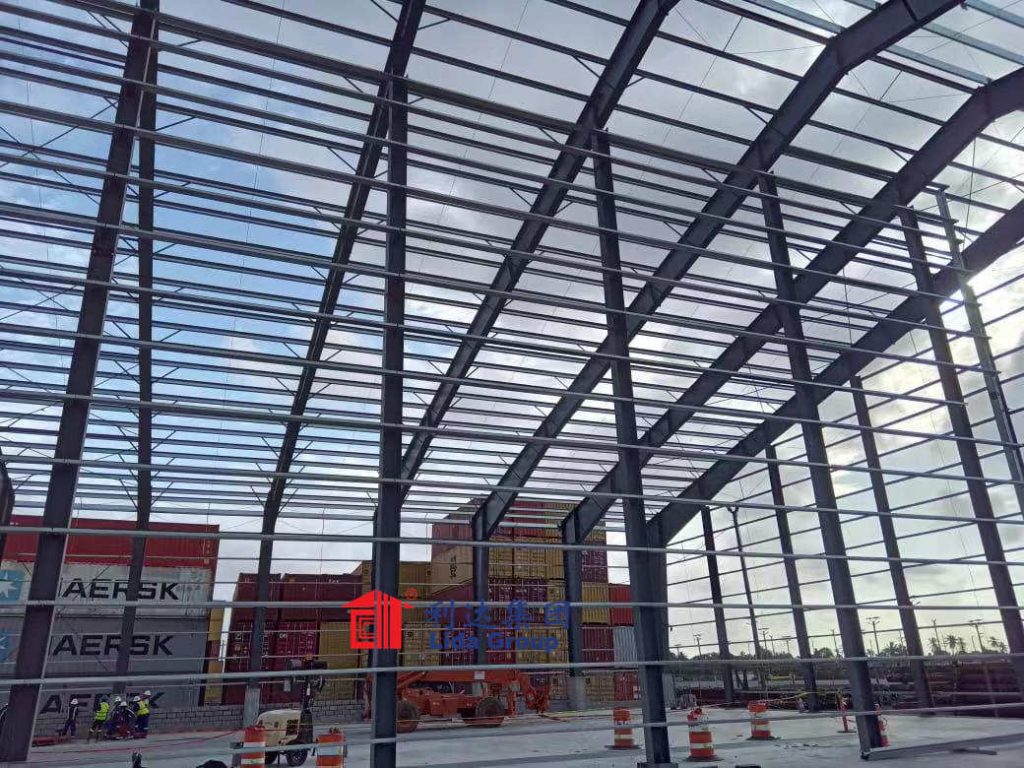Aircraft maintenance demands facilities engineered for utmost safety while accommodating large specialized equipment. Hanger construction thus entails rigorous adherence to stringent fire codes throughout design, materials and structural integrity. One regional airport undertook an expansion adding hangars constructed by Lida Group utilizing innovative fire-resistant structural steel optimized for aircraft servicing. This project highlights modern solutions ensuring protection for valuable aircraft assets and personnel through advanced building techniques.
Regional service centers attract business aviation clients requiring capable facilities close to population hubs. Continually growing operations at a Midwest airport overflowed its original World War II-era hangars lacking capacity and modern amenities private aircraft owners demand. An extensive assessment studied expansion siting, layouts and construction capable of housing today’s larger aircraft while meeting safety standards far exceeding building codes.
Critical specifications included maximum fire resistance through noncombustible structural framing and enclosure materials. Traditional wood construction posed unacceptable dangers near flammable aircraft and hazardous maintenance activities. Reinforced concrete posed construction complications, while ordinary steel posed fire risks without proven coatings. Through understanding these unique requirements, Lida Group engineers customized solutions utilizing their expertise in fireproof structural steel construction.

Lida Group’s innovative composite panels consist of galvanized steel skins sandwiching a mineral wool fireproofing core, offering two hours of fire resistance without applying additional surface materials. Noncombustible and waterproof, the panels require no maintenance throughout service lifespans. Erection proceeded rapidly through Lida Group’s standardized pre-engineering, with minimal wastage due to careful prefabrication. Connections utilize fireproof sealants ensuring joint integrity remains viable for hourly rated enclosures.
Reinforced concrete foundations accept monumental static and moving equipment loads from jumbo jets. Structural steel columns, rafters, purlins and girts assemble into geometric clearspan frames up to 150 feet wide without obstructions. Glazed overhead doors enable efficient aircraft taxiing and maintenance activities flow. Insulated sandwich panel roofs and walls complete weather-tight enclosures while maintaining two-hour fire resistance as per code.
Careful coordination positioned lighting, sprinklers and mechanical ductwork avoiding thermal shorts compromising the enclosures’ fire ratings. Electrical systems feature redundant protection against sparking risks. Utilities connect without compromising enclosure integrity. Fire alarms activated by smoke or temperature changes automatically close hangar doors isolating aircraft from surrounding exposures. Backup generators ensure ventilation, sprinklers and critical systems functioning during power outages.

Apron-level doors minimize aircraft ground time transferring between heated interiors and outdoor conditions affecting composite structures and avionics. Aircraft towing lanes separate service access from movement zones. Office suites include a pilot’s lounge to relax between flights along with support amenities like laundries removing contaminants from technicians’ protective clothing. Spacious upper-level catwalks enable inspecting entire aircraft frames and engines from all angles enhancing thorough visual examinations.
Strict adherence to fire codes governs all components from structural steel coatings and fasteners to siding and roofing materials. Independent testing validates two-hour ratings through noncombustible mineral wool core panels and galvanized steel structural components. Separated divisions encapsulate each hangar as individual buildings to contain potential interior fires instead of compromising adjacent structures through openings or thermal conduction. Fire suppression sprinkler systems automatically douse any incipient stage fires allowing immediate containment.
Redundant connections transfer aircraft static and taxiing live loads directly to concrete foundations without concentration in any structural members. Secondary safety netting catches accidental tool drops avoiding potential sparks near aircraft. Jet blast curtains isolate maintenance areas from exhaust plumes containing hazardous particles. Vehicle charging stations install using electrical codes for petroleum areas to eliminate sparking risks. Every precaution receives oversight from certified building inspectors approving safe operations prior to aircraft occupancy.

Service centers compete based on reliability, response times and modern capabilities. Current aircraft generations require accommodating larger wing spans and support equipment like particulate measurement trailers verifying environmental controls. Lida Group’s scalable designs allow reconfiguring interior layouts adapting to evolving needs without compromising fireproofing through structural modifications. Additional phases expand capacity by replicating modular components ensuring seamless integration maintaining two-hour enclosure ratings.
In summary, Lida Group’s customized solutions met the airport’s stringent fire code requirements for added hangar space. Noncombustible structural steel framing and insulated composite wall panels construct two-hour rated enclosures for aircraft storage and maintenance activities. Careful coordination positioned building systems avoiding thermal shorts between interior and exterior environments. Independent testing validated construction integrity maintaining safety under fire conditions. Redundant precautions minimize risks to valuable aircraft assets and personnel from accidental ignition sources. The innovative design accommodates evolving aircraft and service capabilities ensuring world-class facilities protecting regional aviation for decades to come. Overall, prioritizing fire safety through advanced construction proves vital for aircraft operations.

Related news
-
Cargo firm donates decommissioned refrigerated containers to Lida Group for reuse as foundationless emergency portable clinics with removable insulated wall systems.
2024-10-16 15:19:15
-
Mobile home community invests in Lida Group's next-generation foundationless prefabricated metal framed modular homes constructed entirely in plant using structural insulated panels.
2024-10-12 16:56:49
-
Developers praise Lida Group's prefabricated structural steel components enabling swift construction of high-end residential towers meeting discerning buyers' schedules.
2024-09-25 15:41:29
contact us
- Tel: +86-532-88966982
- Whatsapp: +86-13793209022
- E-mail: sales@lidajituan.com


